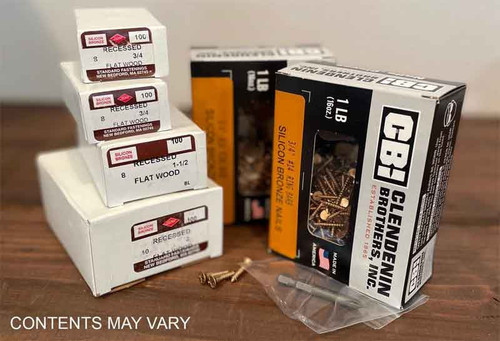For a PDF study plan, click HERE
For a coastal cruising sailboat that's inexpensive and easy to build, it's hard to beat the "sharpie" type hull. Originally developed in the mid 1800's for the oyster trade off Long Island Sound, where it could operate with speed and safety in the shoal waters, the sharpies quickly spread to the Chesapeake and Florida. Our CHESSIE FLYER captures this tradition with her jaunty bowsprit and upswept "pinkie" stern, the character of her clipper bow, graceful sheer, and gaff ketch rig. The double ended hull is both easy to trailer and easy to launch. Even with her shallow draft and low profile, she still offers "camping-type" accommodations for 3 or 4 with sitting headroom above the berths, standing headroom adjacent to the galley, and space for a portable head.
With the centerboard up, the CHESSIE FLYER can operate in a little more than 12" of water. Auxillary power is provided by a small outboard motor in its own well. This is the perfect boat for "gunk-holing" or island hopping and she is easily beached for the night to save the cost of moorings or slips. While not meant for long distance open sea voyages, the CHESSIE FLYER is probably equal in seaworthiness to boats of like displacement. Sufficient internal ballast plus a steel plate centerboard provide positive righting moment, even when heeled to 90o. While the prudent skipper will reduce sail and batten down her hatches in heavy weather, it's nice to know that there is a high degree of safety in her design, including a self-draining cockpit that's well above the waterline.
What about performance? The CHESSIE FLYER has design characteristics that resemble those of the "hot" ultralight displacement racing boats, yet her simple rig avoids expensive winches and costly "go-fast" fittings. The combination of light weight, large sail area, and a narrow double-ended hull will surprise even the most ardent racing skippers. The CHESSIE FLYER will come into her own when reaching in a good breeze. As the hull heels, it presents a good "vee" to the water thereby easing the ride while tracking straight and true. The low ketch rig and flat bottom hull, however, does limit windward ability in choppy headsea conditions.
Our Plans with Full Size Patterns make this a project well suited to even the first-time builder with some woodworking experience. The frames feature straight bottom and side members, covered by sheet plywood planking, sheathed with fiberglass for easy maintenance.
| COMPLETE PLANS include FULL SIZE PATTERNS for the stem, stern post, forward and aft breasthook, centerboard, centerboard trunk assembly, and half section patterns for all frames and adjoining deck beams. Includes Instructions, Bill of Materials, and Fastening Schedule. |
- Length overall (on deck):
- 26'-11"
- Length overall (including bowsprit):
- 30'-7"
- Waterline length:
- 24'-0"
- Beam:
- 7'-11"
- Freeboard forward:
- 3'-3"
- Freeboard aft:
- 2'-4"
- Draft (board up):
- 9"
- Draft (board down):
- 3'-9"
- Height (board up to cabin top):
- 4'-6"
- Displacement:
- 3950 lbs.
- Ballast weight:
- 1000 lbs.
- Cabin headroom:
- 4'-0"
- Cockpit size:
- 5'-6" x 5'-9"
- Sleeping accommodations:
- 3-4
- Sail area:
Main - 127 sq. ft.
Foretriangle - 98 sq. ft.
Mizzen - 75 sq. ft.
Total - 300 sq. ft.- Hull type:
- Flat bottom, hard chine, double ended sharpie-type, centerboard hull with "pinkie" stern, designed for 3/8" plywood.
- Ballast:
- Interior ballast plus 1" plate steel centerboard.
- Sail type:
- Gaff rigged ketch.
- Power:
- Well mounted outboard motor to 5 HP, 15" to 20" nominal shaft.
- Trailer:
- Designed for use with Glen-L Series 6000 boat trailer plans.

















